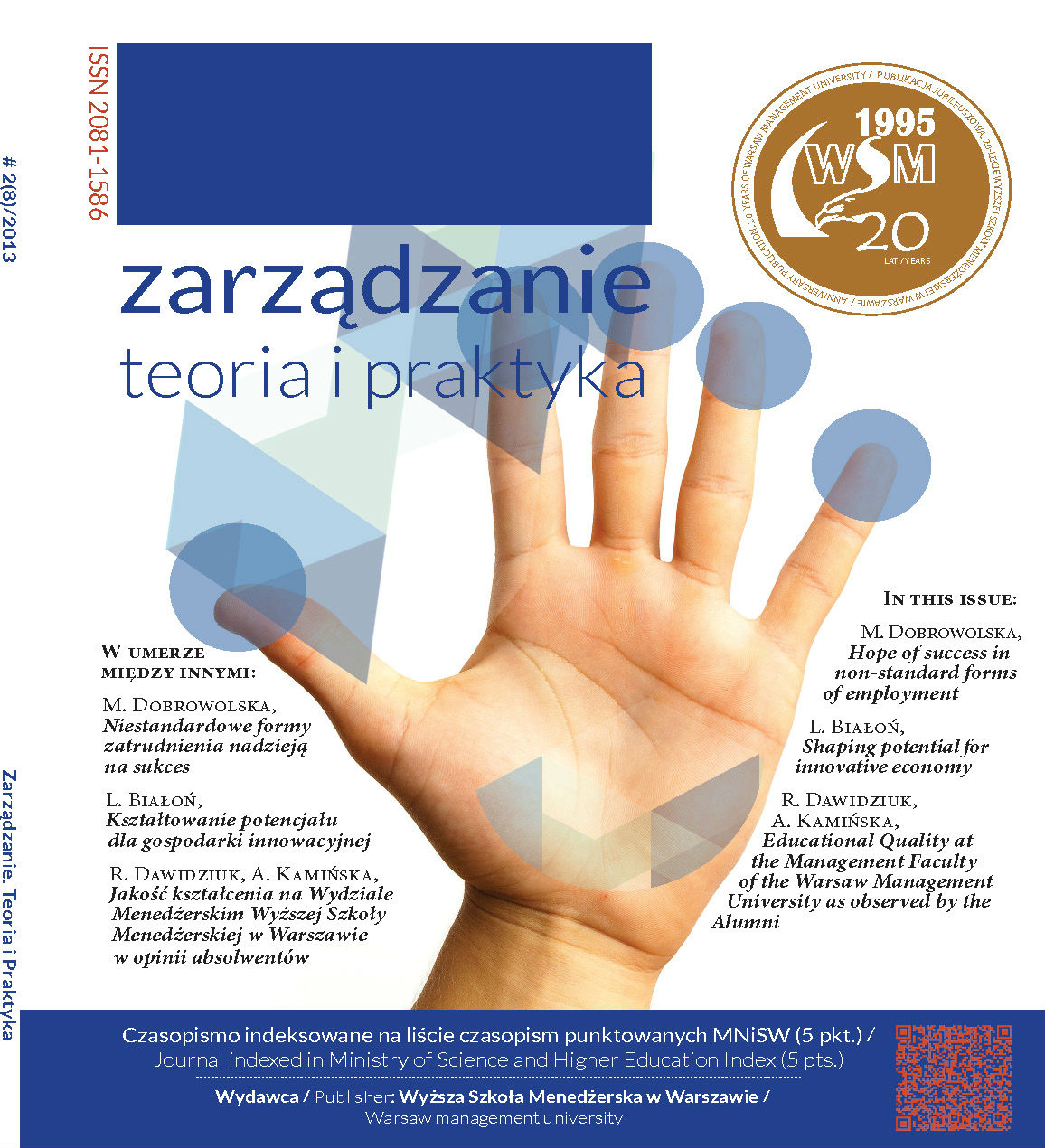Źródła informacji o innowacjach a nakłady na
B+R i inwestycje w środki trwałe w przemyśle MHT i HT w Polsce
Sources of information for innovation and R&D expenditures and investment in new fixed assets in MHT and HT industry in Poland
Author(s): Piotr DzikowskiSubject(s): Economy, Business Economy / Management
Published by: Wydawnictwo Wyższej Szkoły Menedżerskiej w Warszawie
Keywords: sources of informAtion for innovAtion; innovAtion Activity; innovAtion; mHt; Ht.
Summary/Abstract: The paper presents the results of a study aimed at identifying the nature of relations between the sources of information for innovation and R&D expenditures and investment in new fixed assets in MHT and HT industry in Poland. It is assumed that the importance of sources of information for innovation is proportional to the number and scope of innovation activity involved. The scope of the survey relates to innovation in both MHT & HT industry. It is characterized by innovation at the firm level and takes into account the diffusion to the „new for the company”. Innovation activity includes (1) expenditure on research and development and (2) investments in fixed assets not used so far such as: a) buildings, premises and land; b)machinery and equipment, c) computer software. Sources of information for innovation include: customers, internal sources, suppliers, conferences, fairs, exhibitions, competitors, journals, trade magazines, scientific societies, foreign and domestic R&D units, universities, Polish Academy of Sciences units. The survey covers 1355 both MHT & HT industry companies. The methodological part of the analysis is based on a probit modeling, which allows to determine the probability of innovative behaviors depending on the source of information for innovation. The highest number of dependencies concerns customers (57,56%), internal sources (40,66%) and conferences, fairs and exhibitions (40,30%). The lowest number of linkages concerns Polish Academy Units (3,76%) and national R&D units (3,47%). The most significant information originate from universities (5 positive models), competition (4 positive models) and conferences, fairs and exhibitions (4 positive models). There are no significant models for customers what suggests that there is a technological gap between Poland and developer economies.
Journal: Zarządzanie. Teoria i Praktyka
- Issue Year: 12/2015
- Issue No: 2
- Page Range: 3-9
- Page Count: 7
- Language: Polish

